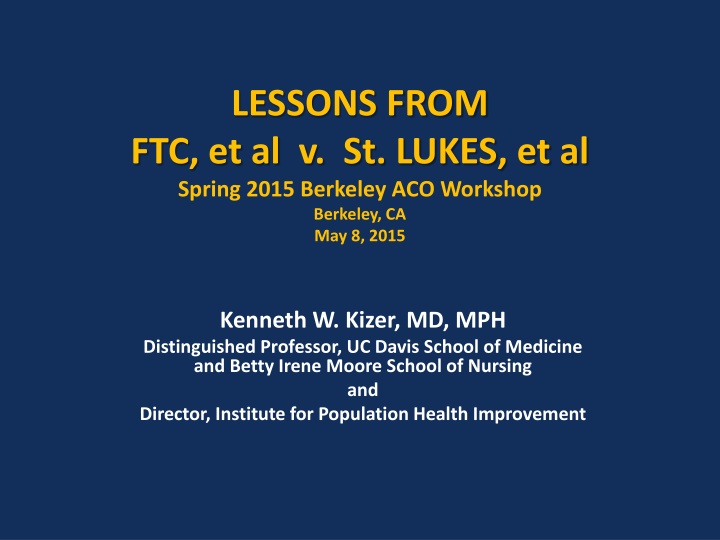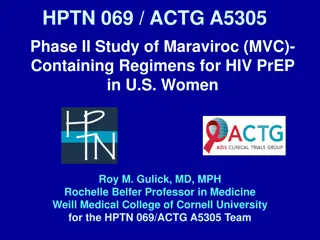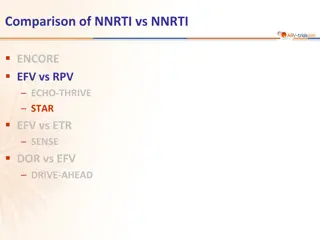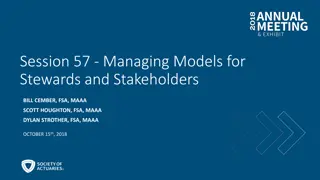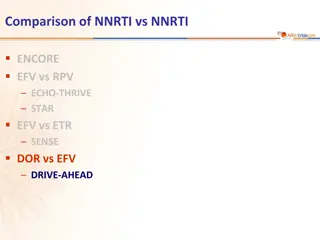Lessons from FTC v. St. Lukes - Antitrust Case Study
This case study delves into the legal battle between St. Lukes Health System and the Federal Trade Commission (FTC) over the acquisition of Saltzer Medical Group in Idaho. Explore the key issues surrounding physician employment, healthcare integration, data interoperability, and competitive market practices. Gain insights into the challenges and implications of healthcare consolidation on quality, efficiency, and market dominance.
Download Presentation

Please find below an Image/Link to download the presentation.
The content on the website is provided AS IS for your information and personal use only. It may not be sold, licensed, or shared on other websites without obtaining consent from the author.If you encounter any issues during the download, it is possible that the publisher has removed the file from their server.
You are allowed to download the files provided on this website for personal or commercial use, subject to the condition that they are used lawfully. All files are the property of their respective owners.
The content on the website is provided AS IS for your information and personal use only. It may not be sold, licensed, or shared on other websites without obtaining consent from the author.
E N D
Presentation Transcript
LESSONS FROM FTC, et al v. St. LUKES, et al Spring 2015 Berkeley ACO Workshop Berkeley, CA May 8, 2015 Kenneth W. Kizer, MD, MPH Distinguished Professor, UC Davis School of Medicine and Betty Irene Moore School of Nursing and Director, Institute for Population Health Improvement
FTC, et al v. St. Lukes, et al: Background http://3e3utw244xu62y7d8u2ogrlf146e.wpengine.netdna-cdn.com/wp-content/uploads/2013/09/ID-county.jpg St. Lukes Health System is one of two major private health systems in southwestern Idaho Saltzer Medical Group is the largest multispecialty physician practice in Idaho St. Lukes purchased Saltzer in 2012 (after previously purchasing numerous other physician practices in the area)
FTC, et al v. St. Lukes, et al: Background St. Lukes asserted that they had achieved quality and cost efficiencies through their prior acquisitions and that acquisition of Saltzer was necessary to achieve their further objectives in this regard, claiming that ownership of Saltzer (i.e., full financial integration) was the clearly superior method to do so and was essential to achieve clinical data interoperability (through a common EHR), promote data analytics, and align physician incentives with the health system s efficiency goals. Additionally, they claimed that a core number of primary care physicians is essential to provide integrated care.
FTC, et al v. St. Lukes, et al: Background St. Lukes acquisition of Saltzer was challenged in federal district court by the Federal Trade Commission, Idaho s Attorney General, St. Alphonsus Health System and Treasure Valley Hospital, who asserted the acquisition violated antitrust restrictions because it would give St. Lukes control of about 80% of the Nampa primary care market.
FTC, et al v. St. Lukes, et al: Key Issues Is employment of physicians the most effective way to: achieve clinical integration and associated cost and quality advantages? align physician and health system goals? achieve data interoperability? promote data analytics? Is a core number of primary care physicians necessary to provide integrated care? Was St. Lukes acquisition of the Saltzer Medical Group anti-competitive?
Published on FierceHealthcare (http://www.fiercehealthcare.com) Judge: St. Luke's purchase of physician group violates antitrust law January 27, 2014 | By Ilene MacDonald http://assets.fiercemarkets.com/public/sites/healthcare/hcregulation.jpg A federal judge ruled Friday that St. Luke's Health System in Idaho violated antitrust laws when it purchased the state's largest independent physician's practice--a decision that may influence future hospital-physician buyouts across the country. FierceHealthcare interviewed attorneys for both sides of the case, which pitted the not-for-profit health system against its main competitor, St. Alphonsus Health System, which is also based in Boise, as well as Treasure Valley Hospital in Boise, the Federal Trade Commission and the Idaho Attorney General. The plantiffs argued that the acquisition gave St. Luke's an unfair and illegal marketplace advantage by dominating primary medical care in Canyon County. They also said it would drive up healthcare prices in the area. In the decision, U.S. District Judge B. Lynn Winmill acknowledged that St. Luke's intended to improve patient outcomes when it purchased the Nampa- based Saltzer Medical Group, a practice of 40 physicians, in December 2012. Furthermore, he said that if the partnership remained intact, St. Luke's would indeed improve healthcare delivery in the area. "But there are other ways to achieve the same effect that do not run afoul of the antitrust laws and do not run such a risk of increased costs," he wrote. "For all of these reasons, the Acquisition must be unwound.
St. Luke's options dwindle as 9th Circuit antitrust appeal fails The 9th Circuit decision carries implications for the industry nationwide. By ZACH KYLE St. Luke's Health System's fight to hang on to a big Nampa medical practice likely just ended in defeat. "This case is important because it ensures Idaho's laws will continue to protect and promote competition and a healthy, thriving marketplace, not just in southwestern Idaho but across the state," St. Luke's isn't saying what it will do next on the legal front, but the Boise health system's odds for success are long now that a federal appeals court has upheld U.S. District Judge B. Lynn Winmill's ruling in an antitrust case. Winmill ruled in January 2014, and the 9th U.S. Circuit Court of Appeals agreed, that St. Luke's Health System violated federal antitrust laws by taking over a private practice that would have given it a stranglehold on Nampa's adult primary-care market. Lawrence Wasden Idaho Attorney General "The acquisition would have delivered no benefits to consumers that could not be achieved in ways other than the anticompetitive merger, Read more here: http://www.idahostatesman.com/2015/02/10/3637794_9th- circuit-upholds-ruling-against.html?rh=1#storylink=cpy Federal Trade Commission
FTC, et al v. St. Lukes, et al: Lessons 1. Acquisition/ownership/employment is not the only or most effective way to achieve clinical integration and associated cost and quality advantages
CLINICAL INTEGRATION: Form vs Function Integrated patient care and integrated delivery system are not synonymous; full financial integration is not synonymous with nor necessary for clinical integration Integrated delivery system (IDS) is a generic term for a variety of organizational structures having varying degrees of administrative, financial and/or clinical integration; there is no standardized definition of what constitutes an IDS Integrated delivery systems do not necessarily produce integrated care e.g., VA early 1990s, DOD-Military Treatment Facilities Achieving clinical integration is dependent on key organizational functionalities, not a particular structure; no single organizational form has been shown to be superior to others for achieving integrated care
CLINICAL INTEGRATION: Core Functionalities A values-based shared vision of healthcare delivery that is patient centric and population health focused A governance structure that established clear clinical goals and oversees implementation of policies and procedures for coordinating care across the continuum of servcies Strong clinical leadership that drives integrated care and engages frontline caregivers Information management tools (e.g., EHRs, HIEs, data analytics) and other supporting infrastructure Team-based care Methods of accountability, including a performance management system that consistently measures and monitors clinical performance Shared financial risks and rewards for clinical outcomes
FTC, et al v. St. Lukes, et al: Lessons 2. Assertions of improved efficiency and quality must be more than aspirational or speculative a. Need baseline performance data b. Evidence of improvement must be able to withstand scrutiny c. Improved functioning must be clearly linked to the consolidation d. These improvements need to be linked to a coherent overarching strategy 3. Employment is not required for physicians to gain access to electronic medical record systems or data analytics (population health management) tools
FTC, et al v. St. Lukes, et al: Lessons 4. Asserting that a core number of primary care physicians is essential to provide integrated care is not supported by the evidence 5. Employment of physicians is not necessary to align incentives and transition to value-based payment nor required to achieve clinical integration
Published on FierceHealthcare (http://www.fiercehealthcare.com) Healthcare systems fall short in physician engagement, docs report June 9, 2014 | By Julie Bird The problem is many organizations don't know how to bring physicians into their fold and have successful outcomes, said Angood. There is more to integration than recruitment and getting physicians to sign a contract, he said. Healthcare systems that engage with physicians can improve their recruitment and retention and improve their chances of reaching other high-priority goals Doctors who feel engaged are more likely to be satisfied in their work, according to a summary of the findings published online in the American Hospital Association's Hospitals & Health Networks Forum. But "engagement levels over the past three years have grown at a lukewarm pace, at best," according to the symmary by Physician Wellness Services consulting physicians Daniel Whitlock, M.D., M.B.A., and Robert Stark, M.D. The five most important elements to feeling engaged, according to the survey were: 1. Feeling respected for competency and skills 2. Feeling that opinions and ideas are valued 3. Maintaining a good relationship with peers 4. Achieving a good work/life balance 5. Having a voice in how the doctor's time is structured and used Peter Angood, MD CEO, ACPE February 2014 http://assets.fiercemarkets.net/public/Angood%20Print%204.25%20x%205.5.jpg
